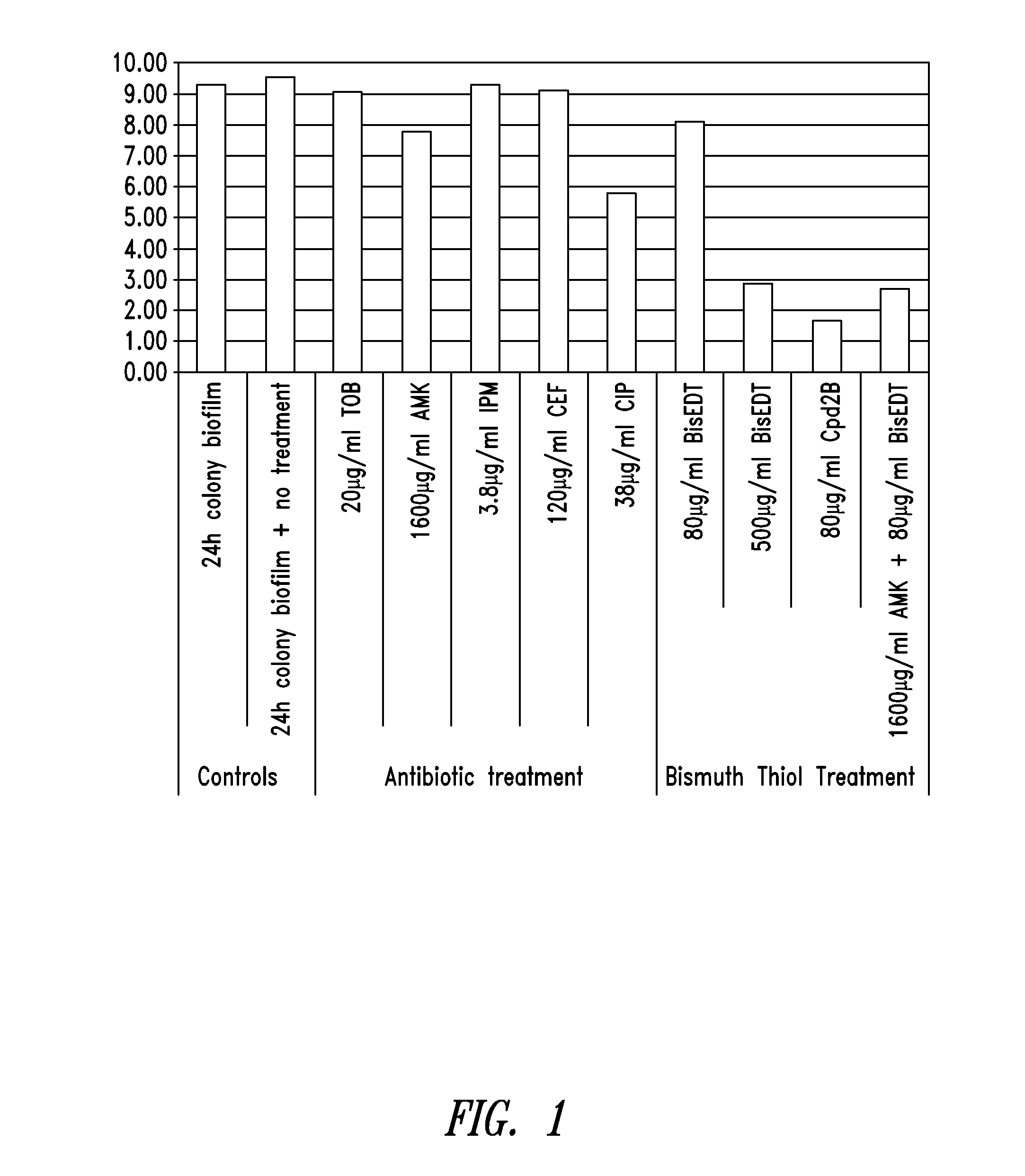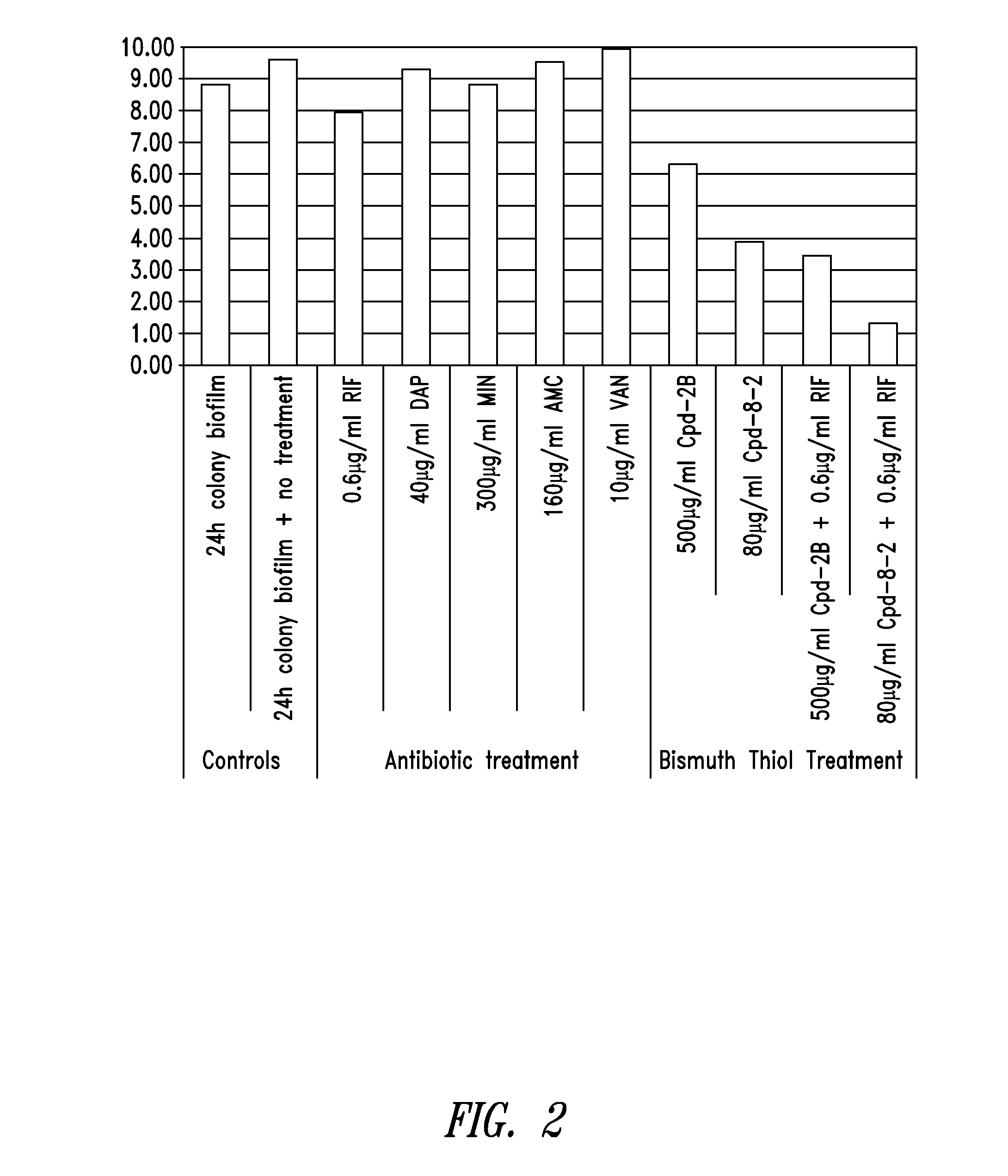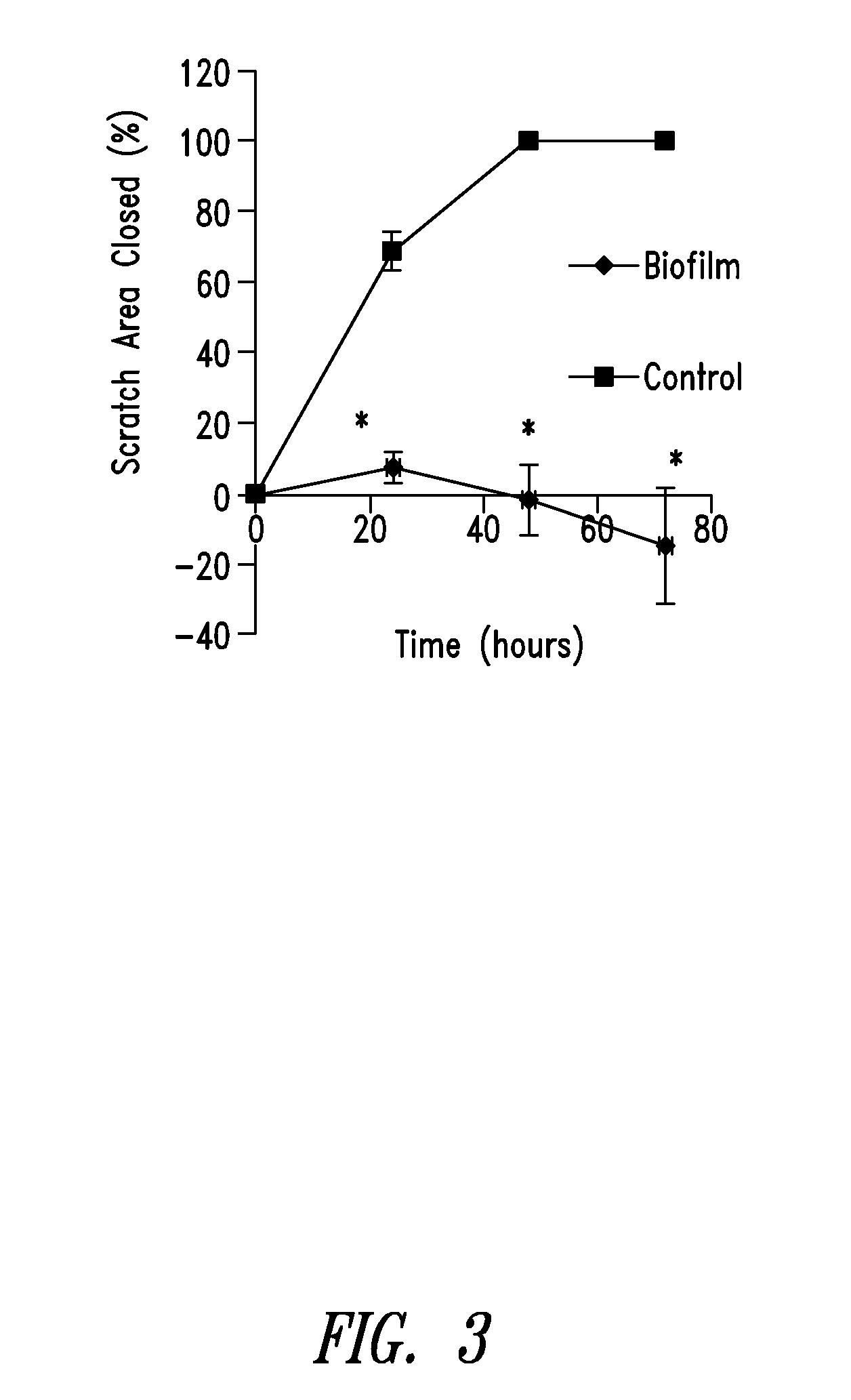Bismuth-thiols as antiseptics for epithelial tissues, acute and chronic wounds, bacterial biofilms and other indications
a technology of thiols and epithelial tissues, applied in the field of microbial infections, to achieve the effect of reducing the number of people and reducing the cos
- Summary
- Abstract
- Description
- Claims
- Application Information
AI Technical Summary
Benefits of technology
Problems solved by technology
Method used
Image
Examples
example 1
Preparation of BT Compounds
[0157]The following BT compounds were prepared either according to the methods of Domenico et al. (U.S. RE37,793, U.S. Pat. Nos. 6,248,371, 6,086,921, 6,380,248) or as microparticles according to the synthetic protocol described below for BisEDT. Shown are atomic ratios relative to a single bismuth atom, for comparison, based on the stoichiometric ratios of the reactants used and the known propensity of bismuth to form trivalent complexes with sulfur containing compounds. The numbers in parenthesis are the ratios of bismuth to one (or more) thiol agents (e.g. Bi:thiol1 / thiol2; see also Table 1).
[0158]1) CPD 1B-1 Bis-EDT (1:1) BiC2H4S2
[0159]2) CPD 1B-2 Bis-EDT (1:1.5) BiC3H6S3
[0160]3) CPD 1B-3 Bis-EDT (1:1.5) BiC3H6S3
[0161]4) CPD 1C Bis-EDT (soluble Bi prep.) (1:1.5) BiC3H6S3
[0162]5) CPD 2A Bis-Bal (1:1) BiC3H6S2O
[0163]6) CPD 2B Bis-Bal (1:1.5) BiC4.5H9O1.5S3
[0164]7) CPD 3A Bis-Pyr (1:1.5) BiC7.5H6N1.5O1.5S1.5
[0165]8) CPD 3B Bis-Pyr (1:3) BiC15H12N3O3...
example 2
Colony Biofilm Model of Chronic Wound Infection Inhibition by BT Compounds
[0183]Because bacteria that exist in chronic wounds adopt a biofilm lifestyle, BTs were tested against biofilms for effects on bacterial cell survival using biofilms prepared essentially according to described methods (Anderl et al., 2003 Antimicrob Agents Chemother 47:1251-56; Walters et al., 2003 Antimicrob Agents Chemother 47:317; Wentland et al., 1996 Biotchnol. Prog. 12:316; Zheng et al., 2002 Antimicrob Agents Chemother 46:900).
[0184]Briefly, colony biofilms were grown on 10% tryptic soy agar for 24 hours, and transferred to Mueller Hinton plates containing treatments. After treatment the biofilms were dispersed into peptone water containing 2% w / v glutathione (neutralizes the BT), and serially diluted into peptone water before being spotted onto plates for counting. Two bacteria isolated from chronic wounds were used separately in the production of colony biofilms for testing. These were Pseudomonas aer...
example 3
Drip Flow Biofilm Model of Chronic Wound Infection Inhibition by BT Compounds
[0190]Drip flow biofilms represent an art accepted authentic model for forming, and testing the effect of candidate anti-bacterial compounds against, bacterial biofilms. Drip flow biofilms are produced on coupons (substrates) placed in the channels of a drip flow reactor. Many different types of materials can be used as the substrate for bacterial biofilm formation, including frosted glass microscope slides. Nutritive liquid media enters the drip flow bioreactor cell chamber by dripping into the chamber near the top, and then flows the length of a coupon down a 10 degree slope.
[0191]Biofilms are grown in drip flow bioreactors and exposed to BT compounds individually or in combinations and / or to antibiotic compounds individually or in combinations with other antibacterial agents, including BT compounds, or to other conventional or candidate treatments for chronic wounds. BT compounds are thus characterized f...
PUM
| Property | Measurement | Unit |
|---|---|---|
| volumetric mean diameter | aaaaa | aaaaa |
| volumetric mean diameter | aaaaa | aaaaa |
| volumetric mean diameter | aaaaa | aaaaa |
Abstract
Description
Claims
Application Information
 Login to View More
Login to View More - R&D
- Intellectual Property
- Life Sciences
- Materials
- Tech Scout
- Unparalleled Data Quality
- Higher Quality Content
- 60% Fewer Hallucinations
Browse by: Latest US Patents, China's latest patents, Technical Efficacy Thesaurus, Application Domain, Technology Topic, Popular Technical Reports.
© 2025 PatSnap. All rights reserved.Legal|Privacy policy|Modern Slavery Act Transparency Statement|Sitemap|About US| Contact US: help@patsnap.com



